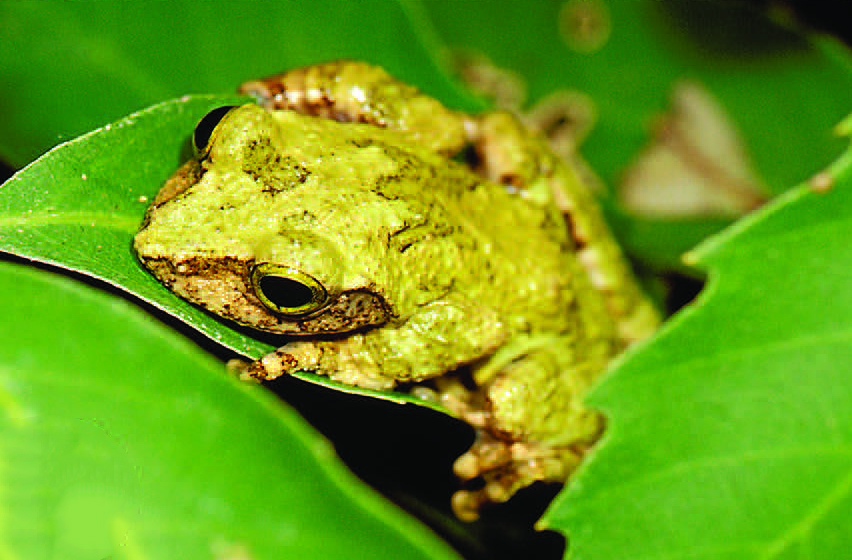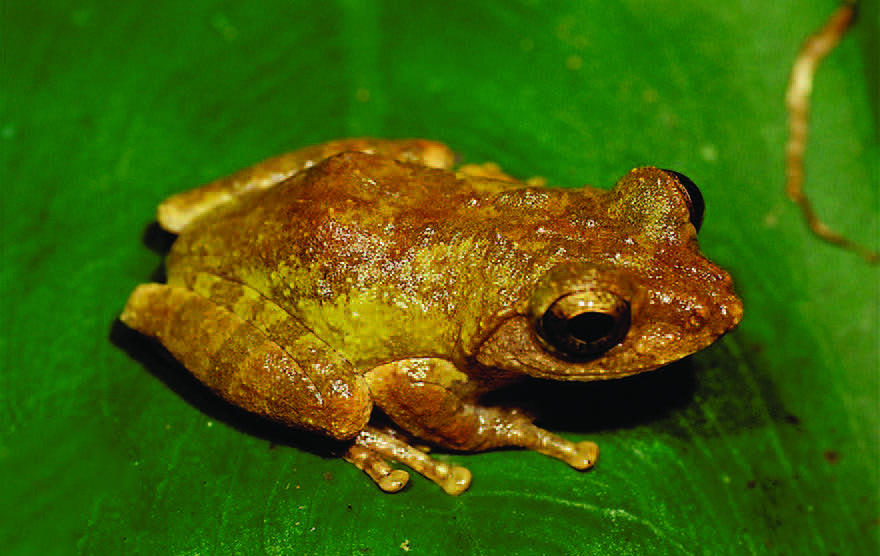Baby Frogs Dine on Mom's Unfertilized Eggs

Two frog species with a bizarre behavior have been discovered in Taiwan: The tadpoles of the newfound tree frogs munch on their mom's gooey, unfertilized eggs.
One of the newly discovered tree frogs — Kurixalus berylliniris, which is Latin for "green-colored iris" — has emerald-hued eyes and a slim body that can be either a dark green or deep tan. Discovered in wet forests in eastern Taiwan, the frogs are dimorphic, with the females having a slight size advantage, measuring 1.6 inches (41 millimeters) in length, compared with the male's 1.37-inch (35 mm) bodies.
Some of the K. berylliniris tadpoles the scientists collected showed creamy, yellow tummies, suggesting the youngsters had feasted on some of their mama's eggs, study leader Shu-Ping Wu of the University of Taipei and colleagues noted online Jan. 28 in the journal ZooKeys.
The other newbie was named Kurixalus wangi in honor of herpetologist Ching-Shong Wang. This golden-eyed frog is tiny, with males measuring some 1.18 inches (30 mm) in length and females extending 1.34 inches (34 mm). Compared with its eyes, the frog's body is pretty drab, with brownish-green skin covered in dark-brown and black spots. The animal's belly and throat are whitish. [See Photos of 40 Freaky Frogs]
Both tree frogs lay their eggs in tree holes, the researchers found.
The two frog species, as compared with each other and other species, had different mating calls, distinct genetic compositions and other genetic features, and diverse morphological characteristics, leading the researchers to conclude these were two new species.
"Although Taiwan is a highly developed island with significant alterations to the natural landscape and destruction of critical habitats for amphibians, it is noteworthy that during the last 50 years, six of the seven newly described frog species in Taiwan were tree frogs inhabiting forested areas," the researchers wrote in their journal article.
Get the world’s most fascinating discoveries delivered straight to your inbox.
Follow us @livescience, Facebook& Google+. Original article on Live Science.
Jeanna Bryner is managing editor of Scientific American. Previously she was editor in chief of Live Science and, prior to that, an editor at Scholastic's Science World magazine. Bryner has an English degree from Salisbury University, a master's degree in biogeochemistry and environmental sciences from the University of Maryland and a graduate science journalism degree from New York University. She has worked as a biologist in Florida, where she monitored wetlands and did field surveys for endangered species, including the gorgeous Florida Scrub Jay. She also received an ocean sciences journalism fellowship from the Woods Hole Oceanographic Institution. She is a firm believer that science is for everyone and that just about everything can be viewed through the lens of science.



